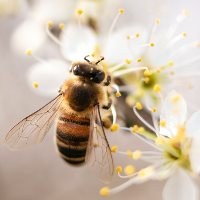(BRUSSELS) – The EU continued its battle to address pollinator decline Thursday with new rules on pesticides which will, once applicable, lower the maximum residues levels (MRLs) of two pesticides in food.
Assessments by the European Food Safety Authority (EFSA) have shown that the two chemicals, belonging to the group of neonicotinoid pesticides, clothianidin and thiamethoxam, pose a high risk to bees and contribute to the global decline of pollinators. For this reason, their outdoor use has already been banned in the EU in 2018.
The new rules will lower existing MRLs for these substances to the lowest level that can be measured with the latest technologies. They will apply to all products produced in the EU, but also to imported food and feed products.
“Today’s actions, also affecting imported food, build on our decision in 2018 to ban outdoor use for these two neonicotinoids within the EU, as for the first time, pesticide maximum residue levels will be lowered to address pollinator decline and protect our environment,” said Commissioner for Health & Food Safety Stella Kyriakides: “We remain steadfast in our commitment in the Farm to Fork strategy’s ambitions of moving towards sustainable food systems and protecting pollinators”.
The Regulation puts into practice EU goals, announced in the Green Deal and Farm to Fork Strategy, to take into account environmental aspects when assessing requests for import tolerances for pesticide substances no longer approved in the EU, while respecting WTO standards and obligations. The measures will apply to imported products as of 2026. This will give time for third countries to comply with the new rules.
Information on neonicotinoids.
Maximum Residues Levels (MRLs)


